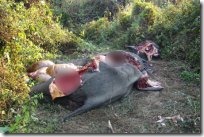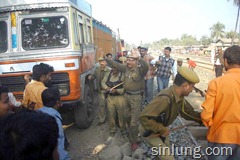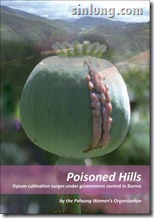 Dave Grant, Vice President of Sales Development Education, Mary Kay Asia Pacific Region, Puneet Madan, Director- Sales Development and Hina Nagarajan, Country Manager of Mary Kay Cosmetics display the latest products of Mary Kay launched at a press conference held at Jumping Bean Café in Dimapur on January 28.
Dave Grant, Vice President of Sales Development Education, Mary Kay Asia Pacific Region, Puneet Madan, Director- Sales Development and Hina Nagarajan, Country Manager of Mary Kay Cosmetics display the latest products of Mary Kay launched at a press conference held at Jumping Bean Café in Dimapur on January 28.
Dimapur, Jan 29 : Global beauty leader Mary Kay Cosmetics India Pvt Ltd., reported to be one of the largest direct sellers of skincare and color cosmetics, today launched three new products at Jumping Beans in Dimapur on January 28. The three new products include two fragrances – Affection Eau De Parfum for women and Domain cologne spray for men and also MelaCEP Whitening System.
During the press conference, Hina Nagarajan, Country Manager of Mary Kay Cosmetics Pvt. Ltd., India announced that “Mary Kay is going to spread its operations in Nagaland, as it is one of the biggest markets for the company in North East India.” She also announced that by end of April, an office in Dimapur will be set up to support the business of Mary Kay’s Independent sales force members. She revealed that the office will facilitate ordering of products, payments and delivery of products.
Hina Nagarajan said Nagaland has contributed a lot to the Mary Kay annual global campaign called “Beauty that counts” through the sales of lipsticks where a part of the sales of every “Mary Kay Crème lipsticks” in specific shades is donated to an initiative for women and children around the world.
“There are around 800 to 900 sales force members in Nagaland alone” stated Puneet Madan, Director of Sales Development. He said that it was not only Dimapur that was showing a positive response. Other districts of Nagaland as well such as Peren, Phek and Mokokchung were showing a tremendous interest in Mary Kay products, he said. Dave Grant, Vice President of Sales Development and education of Mary Kay Asia Pacific Region and other Mary Kay representatives were also present at the press conference.
Also, in a personal interaction with Hina Nagarajan, she revealed that the Mary Kay consultants are trained every month and there are various courses and certified make-up training courses provided by professionals. She said Mary Kay believes in product and culture. “Culture training is very important to Mary Kay because they are going to be the messengers of Mary Kay,” she said.
Nagarajan also opined that the opportunity to work for a business like Mary Kay starts from mainland towns but spreads rapidly to other towns in the interiors as well. “It is not easy to do business in the North East states,” she said. She also revealed that Mary Kay is keen on investments in northeast especially Nagaland and that their focus will be to strengthen further infrastructure development.
via Morung Express News













